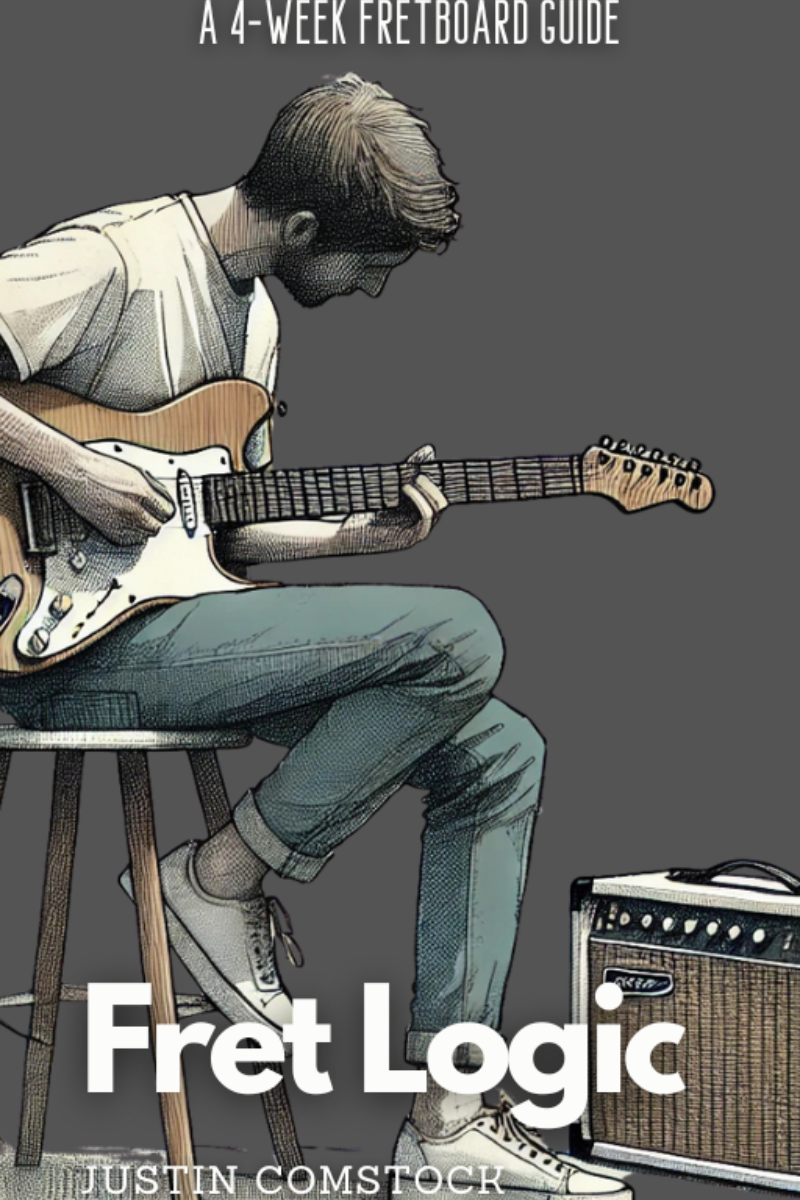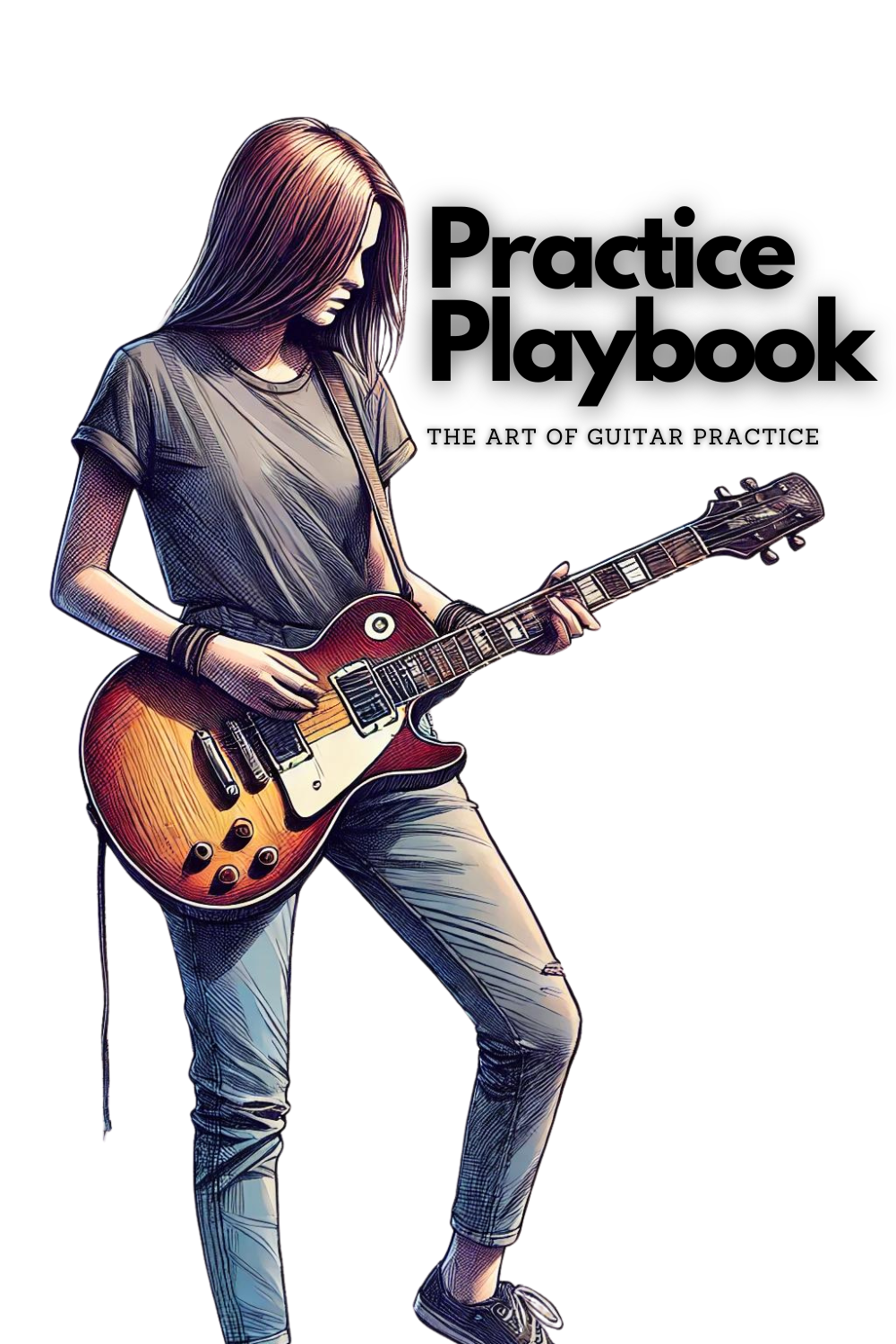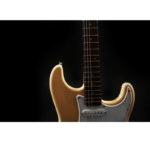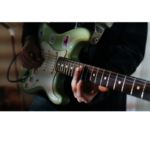When I first started mapping the guitar fretboard, I used scales and patterns like most players. But over time, I realized something deeper: intervals are the true DNA of music on the guitar. Once you learn how intervals work, you’ll never feel lost again.
Think of intervals as the distances between notes. They are what give music its character—the bite of a minor 2nd, the sweetness of a major 3rd, the tension of a tritone. By learning intervals on your guitar, you’re not just memorizing notes—you’re training your ears, your fingers, and your brain to see the fretboard in high definition.
Why Guitar Intervals Matter
Most guitarists get stuck playing scales up and down, like running laps without ever playing the game. Intervals change that. Instead of just memorizing where to put your fingers, you begin to understand the relationships between notes.
- A perfect 4th becomes a building block for funk riffs.
- A minor 3rd shows you the backbone of the blues.
- A major 7th pulls you toward jazz voicings.
Once you see intervals, you see music.
👉 If you’re brand new, check out my beginner guitar chord chart. It will give you a foundation for building chords that connect directly to intervals.

❌ Stop Guessing. Start Shredding.
If you’re still fumbling through scale patterns and box shapes… it’s costing you progress.
FretDeck™ is the no-fluff system that shows you exactly how to master the fretboard—fast. Early access.
⚡️ This isn’t for dabblers. It’s for players who want results.
👉 Click here to join the pre-launch now
Early access. Limited rewards. Don’t wait.
Mapping the Fretboard with Intervals
Here’s a simple exercise to get you started:
- Pick a root note on the 5th string (say, E on the 7th fret).
- From there, find the intervals above it:
- Minor 2nd – one fret up.
- Major 2nd – two frets up.
- Perfect 4th – same fret on the next string.
- Perfect 5th – two frets up on the next string.
- Octave – two strings over, two frets up.
Go slowly, call each interval out loud, and don’t rush. This isn’t about speed—it’s about mapping your brain to your fretboard.
Pro Tip: Use a metronome, but don’t play fast. Try four clicks before hitting the next interval. It forces you to think, not just react.
The Circle of 4ths: A Guitarist’s Compass
Intervals really come alive when you add the Circle of 4ths. Start on a single string and play through the sequence:
C → F → Bb → Eb → Ab → Db → Gb → B → E → A → D → G → C
Say the notes out loud while you play them. Do this across all six strings. After a week, you’ll be shocked at how familiar the fretboard feels.
Here’s a deeper dive into fretboard mastery
Connecting Intervals to Chords
Here’s where it gets fun: intervals aren’t just for scales—they’re the skeleton of every chord you play.
Take a simple F chord (mini-barre shape). The root is on the 4th string. Walk that root around the circle of 4ths and keep the chord form the same. Suddenly, you’re not just playing one F chord—you’re building movable chord vocabulary.
This is how pros think. They don’t memorize thousands of random shapes—they see intervals and chord relationships.
Interval Exercises You Can Try Today
- Double-Stops: Play 3rds and 6ths across strings for instant melody.
- Octaves: Use the classic Wes Montgomery octave trick (root + octave) to fatten your solos.
- Tritones: Add tension by sliding between the devil’s interval and resolution.
- Sevenths: Practice moving between minor 7ths and major 7ths to unlock jazzy lines.
Each of these will give your playing new textures overnight.
👉 Want some ready-to-go practice prompts? Check out my free resource: 27 Guitar Chord Charts.
The Real Truth
Here’s the truth: you can keep noodling scales for years… or you can master intervals and the fretboard now.
If you’re serious about breaking through, grab my FretDeck: Pentatonic Scales—a tool designed to help you see every scale and interval on the fretboard in minutes, not months.
🎸 Get your free guitar charts here and unlock access to our Guitar Freaks Hangout community on Discord.
Inside, you’ll find:
- Weekly practice challenges.
- Interval and chord drills.
- A community of guitarists who want to get better just like you.
Don’t just practice harder. Practice smarter—with intervals.

Join Guitar Freaks Hangout on Discord! 🎸
Get Fret Logic FREE!
Join the Guitar Freaks Hangout Discord and get exclusive access to my entire e-book, Fret Logic! Master the fretboard and elevate your solos with this comprehensive guide.
👉 Don’t miss out—join now and download your free copy!
Final Thoughts
Learning guitar intervals is like putting on glasses after years of blurry vision. Suddenly the fretboard makes sense. Chords, scales, melodies—they all connect.
So, slow down. Play intervals, not just scales. Use the circle of 4ths. Build chords from what you discover. Before long, you’ll stop memorizing patterns and start making music.

Download the the Practice Playbook!
Practice Playbook is a powerful guide designed to take your guitar practice sessions to the next level. Whether you’re just starting out or looking to sharpen your skills, this playbook gives you everything you need to practice smarter, not harder. With 20 unique guitar practice prompts, 10 highly effective practice methods, and 10 expertly designed practice routines, you’ll have a structured path to real progress.
Download Now










